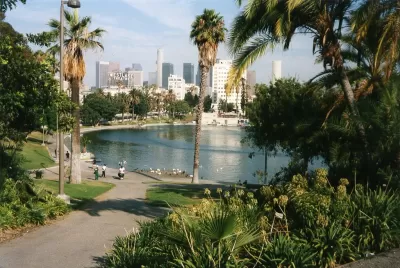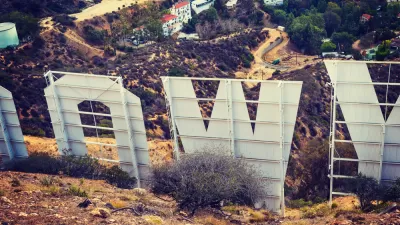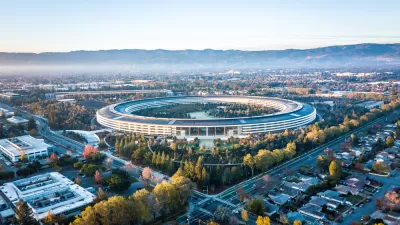The controversy over the recent ballot initiative known as Measure S has Los Angeles thinking: How can the city accommodate new housing supply without disenfranchising communities?

At a recent USC Price School panel, planners, developers, and advocates discussed how Los Angeles could plan for both more housing supply and improved neighborhood equity in the aftermath of the failed Neighborhood Integrity Initiative, which helped to ignite a citywide conversation about planning and growth.
Although the city recently committed to updating community plans on a six-year cycle, former Director of City Planning Gail Goldberg maintained that the community planning effort would be hindered by the lack of a cohesive, inspiring general plan—resulting in every community coming up with its own vision, and more opposition to new development.
"I would propose that if communities have no idea where things are going, or what the ultimate result is supposed to be, it's not an illogical response to oppose new projects," she argued. Moreover, a lack of transparency and accountability leaves them apparently without recourse: "If they worked and adopted a plan that they loved, would the council honor it?"
South L.A. community organizer Damien Goodmon added that the regional and local housing crises can be situated in the context of a global interest in speculative real estate that especially impacts underserved communities. "We're not building housing for people to live in; we're building housing for investment," he said.
Before we discuss whether we need more housing and where to put it, let’s talk about protecting our existing communities. Ultimately, that forces us to talk about the challenge of gentrification—the spatial expression of economic inequality.
Goldberg, too, stressed the need for a holistic approach to planning in her call for "a new way of doing community plans."
Community plans have to be about more than just growth. They are not only about where development goes and where it doesn’t go. Community plans have to talk about the quality of life in that community, and how we make sure that along with housing come all of the other things that we all need—the jobs, the infrastructure, and the amenities that make neighborhoods great.
FULL STORY: Stewarding a Post-'Measure S' LA: Will City Leaders Truly Engage?

Study: Maui’s Plan to Convert Vacation Rentals to Long-Term Housing Could Cause Nearly $1 Billion Economic Loss
The plan would reduce visitor accommodation by 25,% resulting in 1,900 jobs lost.

North Texas Transit Leaders Tout Benefits of TOD for Growing Region
At a summit focused on transit-oriented development, policymakers discussed how North Texas’ expanded light rail system can serve as a tool for economic growth.

Using Old Oil and Gas Wells for Green Energy Storage
Penn State researchers have found that repurposing abandoned oil and gas wells for geothermal-assisted compressed-air energy storage can boost efficiency, reduce environmental risks, and support clean energy and job transitions.

Private Donations Propel Early Restoration of Palisades Playground
Los Angeles has secured over $1.3 million in private funding to restore the Pacific Palisades playground months ahead of schedule, creating a modern, accessible space that supports community healing after recent wildfires.

From Blight to Benefit: Early Results From California’s Equitable Cleanup Program
The Equitable Community Revitalization Grant (ECRG) program is reshaping brownfield redevelopment by prioritizing projects in low-income and environmental justice communities, emphasizing equity, transparency, and community benefits.

Planting Relief: Tackling Las Vegas Heat One Tree at a Time
Nevada Plants, a Las Vegas-based nonprofit, is combating the city’s extreme urban heat by giving away trees to residents in underserved neighborhoods, promoting shade, sustainability, and community health.
Urban Design for Planners 1: Software Tools
This six-course series explores essential urban design concepts using open source software and equips planners with the tools they need to participate fully in the urban design process.
Planning for Universal Design
Learn the tools for implementing Universal Design in planning regulations.
Ascent Environmental
Borough of Carlisle
Institute for Housing and Urban Development Studies (IHS)
City of Grandview
Harvard GSD Executive Education
Toledo-Lucas County Plan Commissions
Salt Lake City
NYU Wagner Graduate School of Public Service





























